Change is coming. What does it mean?
Every city’s progress is important, and change is inevitable. The city of Chattanooga and its surrounding neighborhoods have been changing, evolving, and improving since brothers John and Lewis Ross established Ross’ Landing in 1839. But change does not only affect landscape, trees and inanimate objects, it affects human beings, too. Families and businesses are often uprooted and relocated when change is afoot. Even if this does not happen, changes and improvements often occur without a thought for preserving the memories, landmarks, and glory of the past. And yet humans thrive on these memories, and upon the security of sameness. So, if a community cannot remain the same in real time, it can and should at least be preserved in books, plaques, statues, and historical markers.
Learn more about the Westside Evolves process of uncovering the history of the neighborhood and its residents through historian and author Rita L. Hubbard.
Stewards of the Land
Urban Renewal
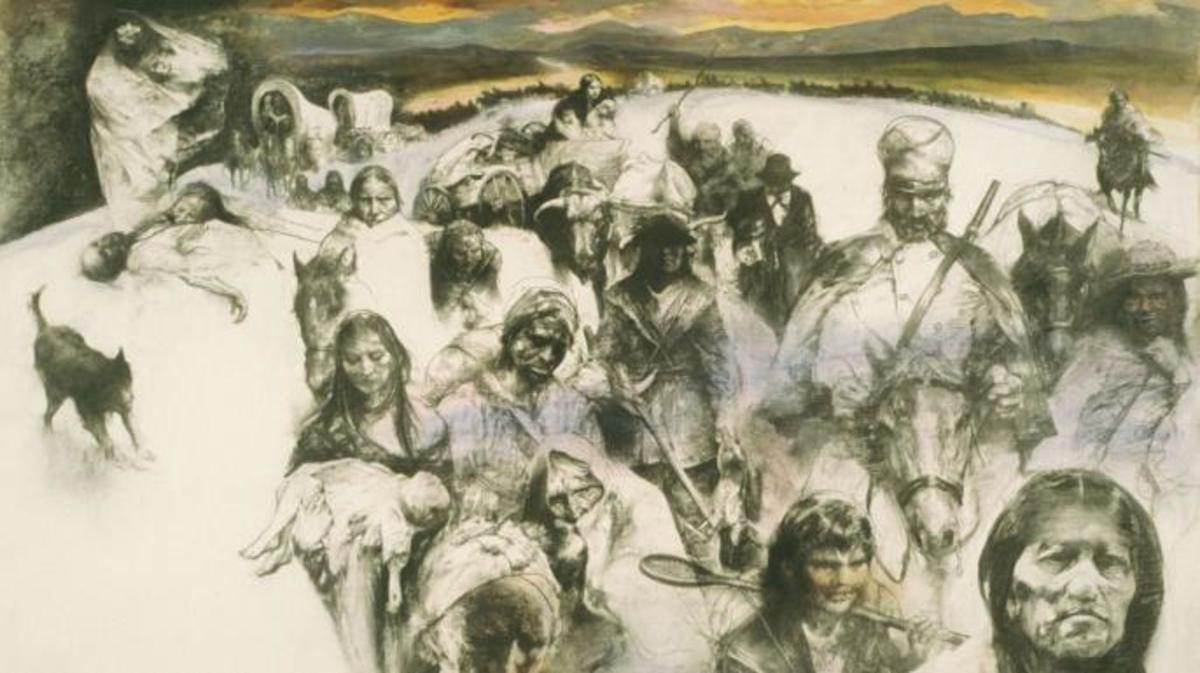 1838Chickamauga Cherokee Removal
1838Chickamauga Cherokee RemovalThe Chickamaugas, a branch of the Cherokee tribe, were the original stewards of the land. After settlers arrived and claimed the land as their own, a forced mass migration event known as the “Trail of Tears” displaced the Chickamauga Cherokee from their homes, temporarily housing them at camps such as Ross's Landing in Chattanooga before sending them West of the Mississippi.
- Industrial Neighborhood: Civil War1861
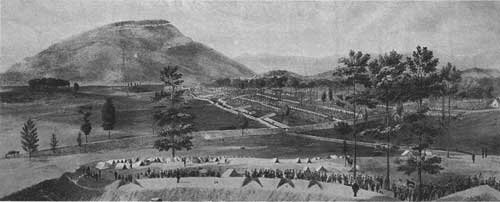
During the Civil War, Cameron Hill was an important communications post for the Union army. Because of its access to rivers and railroads, Chattanooga was a key location for both the Union and Confederate armies and was referred to as the gateway to the deep south.
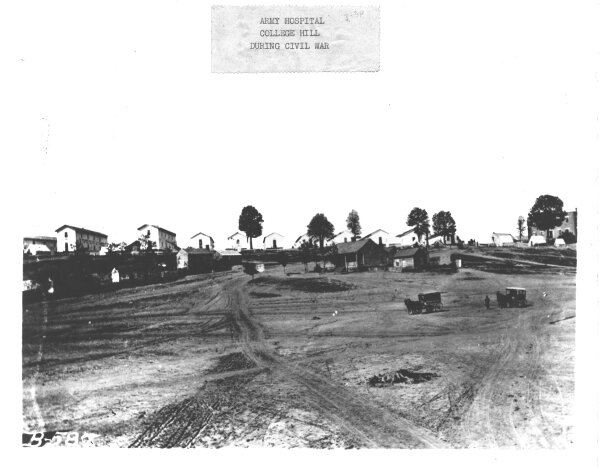 1864Bragg's Hospital During the Civil War
1864Bragg's Hospital During the Civil WarCivil War photo, circa 1864, of Bragg's hospital located on College Hill (also known as Academy Hill) at W. 11th Street and Early Street, Chattanooga, Tennessee. Also shows Masonic Academy on far right and two ambulances. Typed label on front reads: "Army hospital. College Hill during Civil War." Courtesy of the Chattanooga Public Library.
- John S. Lovell Establishes Mahogany Hall1870
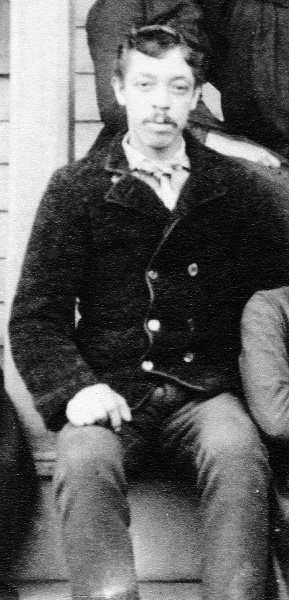
John S. Lovell was one of the first African American men to set up a successful business in downtown Chattanooga on the vibrant 9th street (now MLK). Mahogany Hall was located in what is now known as Miller Park. The building was three stories tall and had a hotel, restaurants, saloons, casino, dance hall, and brothel.
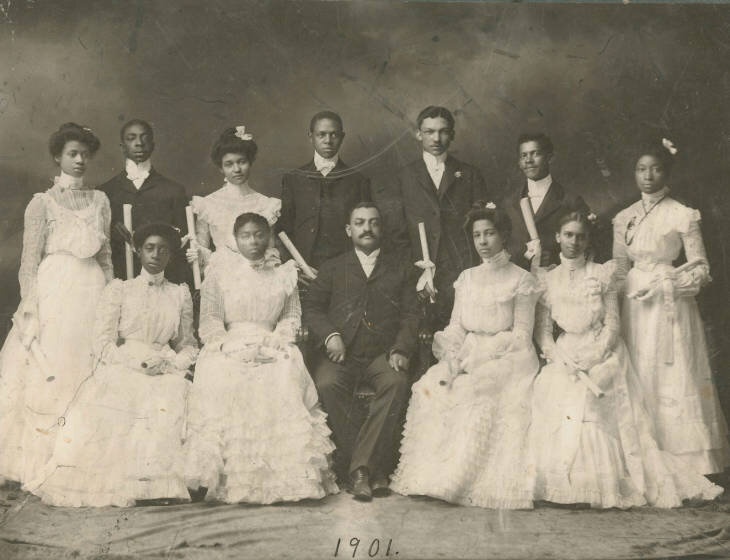 1872First Public School
1872First Public SchoolBy 1872, Howard School had become the first public school (for either white or African American children) in Chattanooga. Professor James Henry, shown in this photograph, was the first African American principal of the school.
- Cameron Hill1886
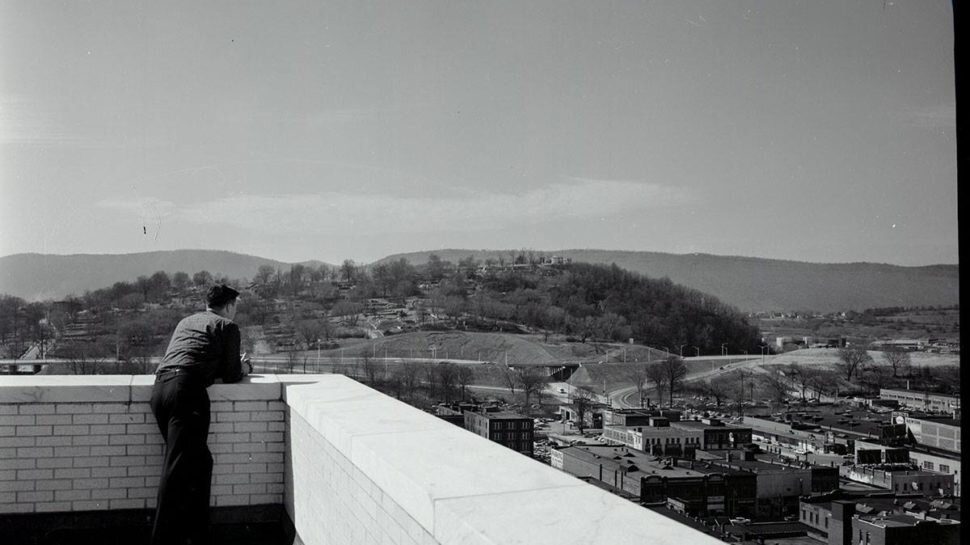
Residential lots along the side of Cameron Hill were auctioned and the neighborhood became a fashionable part of town. The area had an incline and street railway accessing downtown.
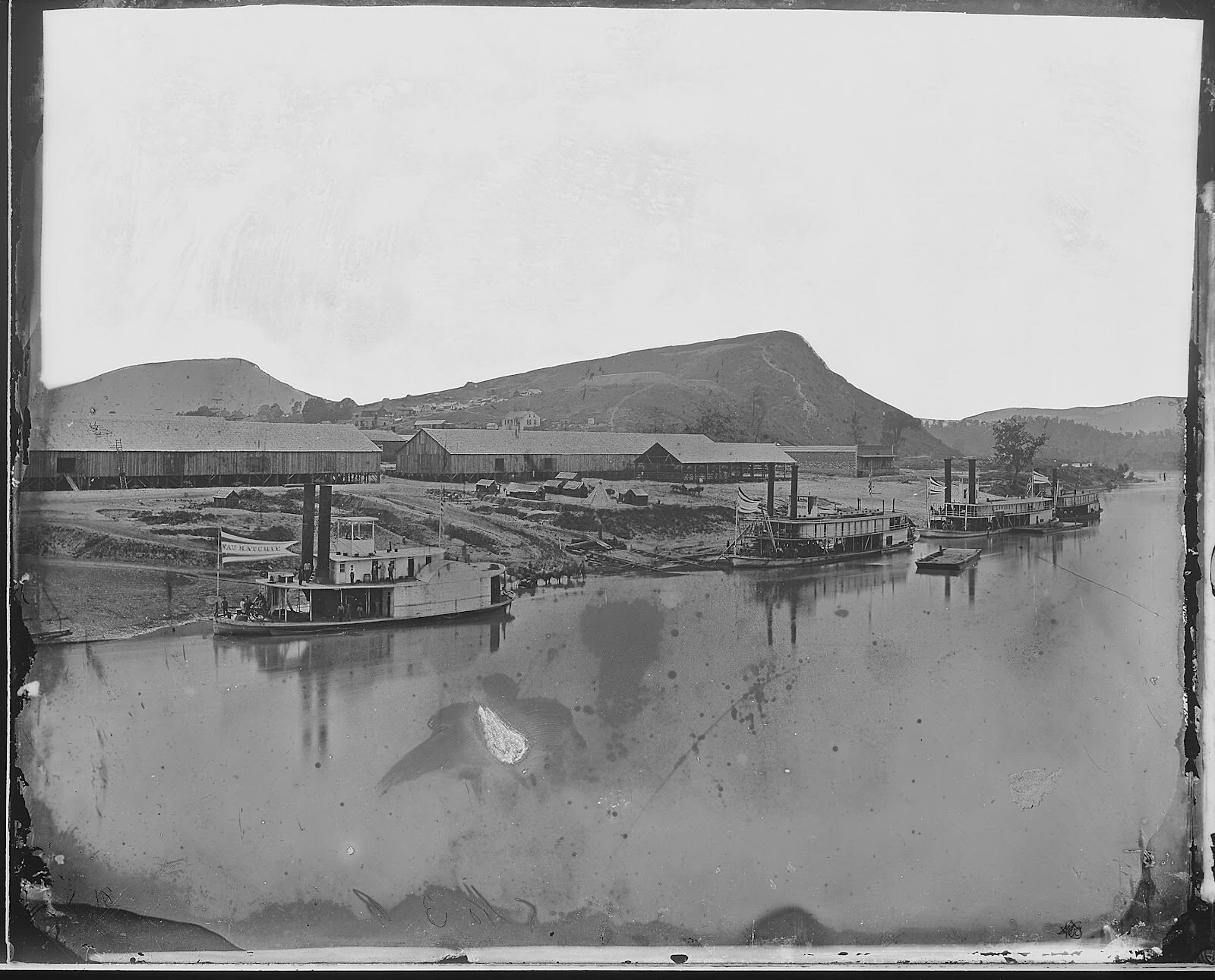
Cameron Hill view from the Tennessee River. Photo courtesy of PicNooga.
- Boynton Park1905
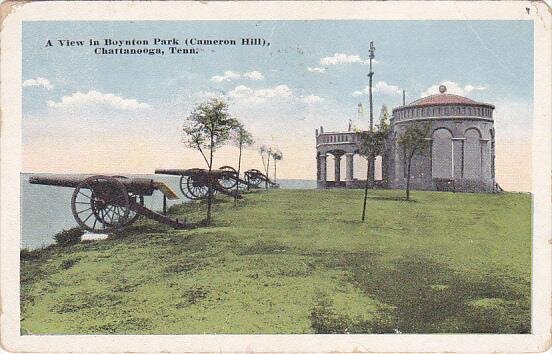
In 1905, a 10-acre park atop Cameron Hill was dedicated as Boynton Park for Union General Henry Boynton. Because of its access to rivers and railroads, Chattanooga was a key location for both the Union and Confederate armies and was referred to as the gateway to the deep south.
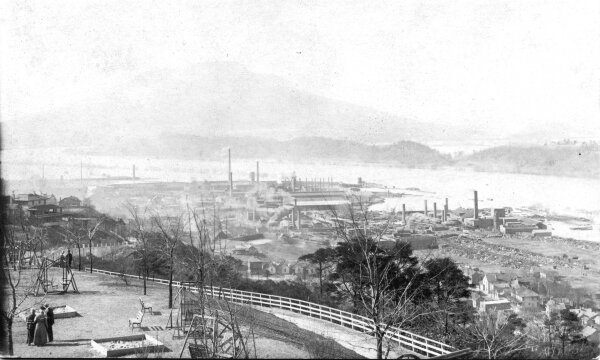 1917The Rise of Industry
1917The Rise of IndustryFactories of coke-fired iron and the developments of Tannery Flats led to the adjacent worker residences of College Hill Courts and Blue Hollow. The photo above shows Lookout mountain obstructed by smog.
- College Hill Courts1940
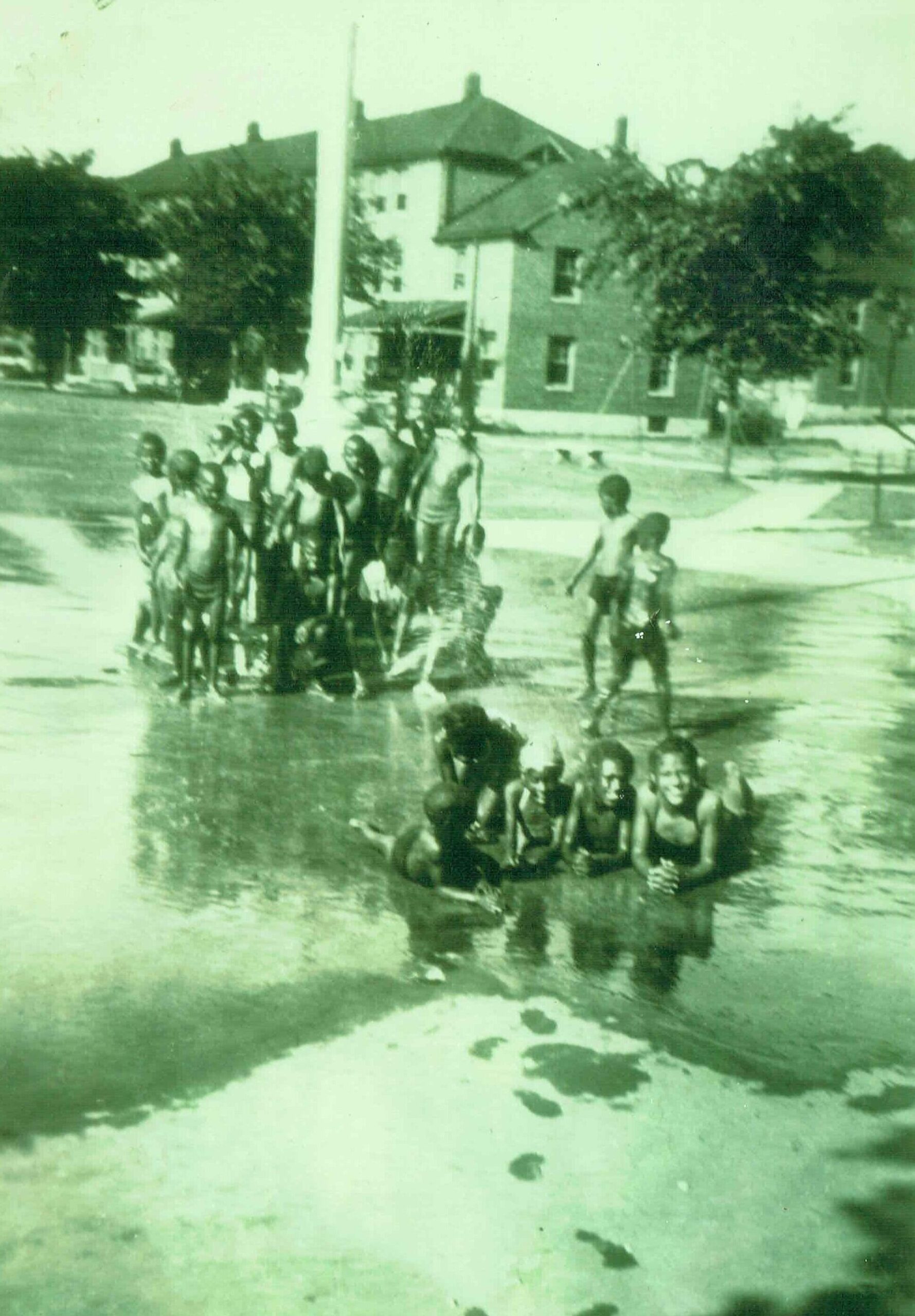
College Hill Courts affordable housing neighborhood opens with 497 units, making it the largest in Chattanooga.

Children play in a central courtyard in the newly constructed College Hill Courts neighborhood.
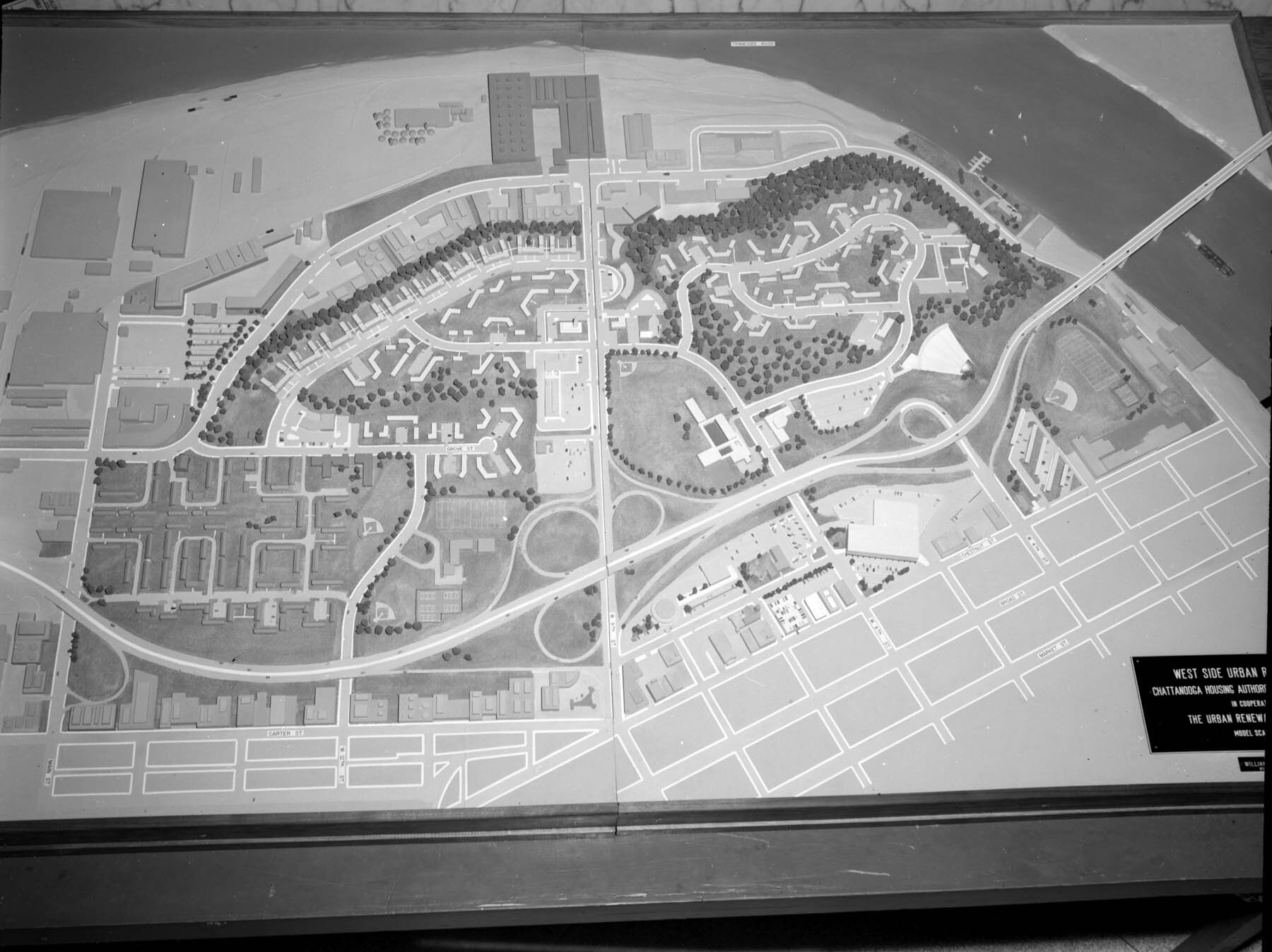 1950A New Urban Plan
1950A New Urban PlanThe Westside Redevelopment Plan designates 407 acres bound by the Tennessee River for “slum clearing.” The plan includes reshaping the topography of the area for optimum vehicular access and relocating over 800 families in the Westside.
- Making Way for a New Center1954
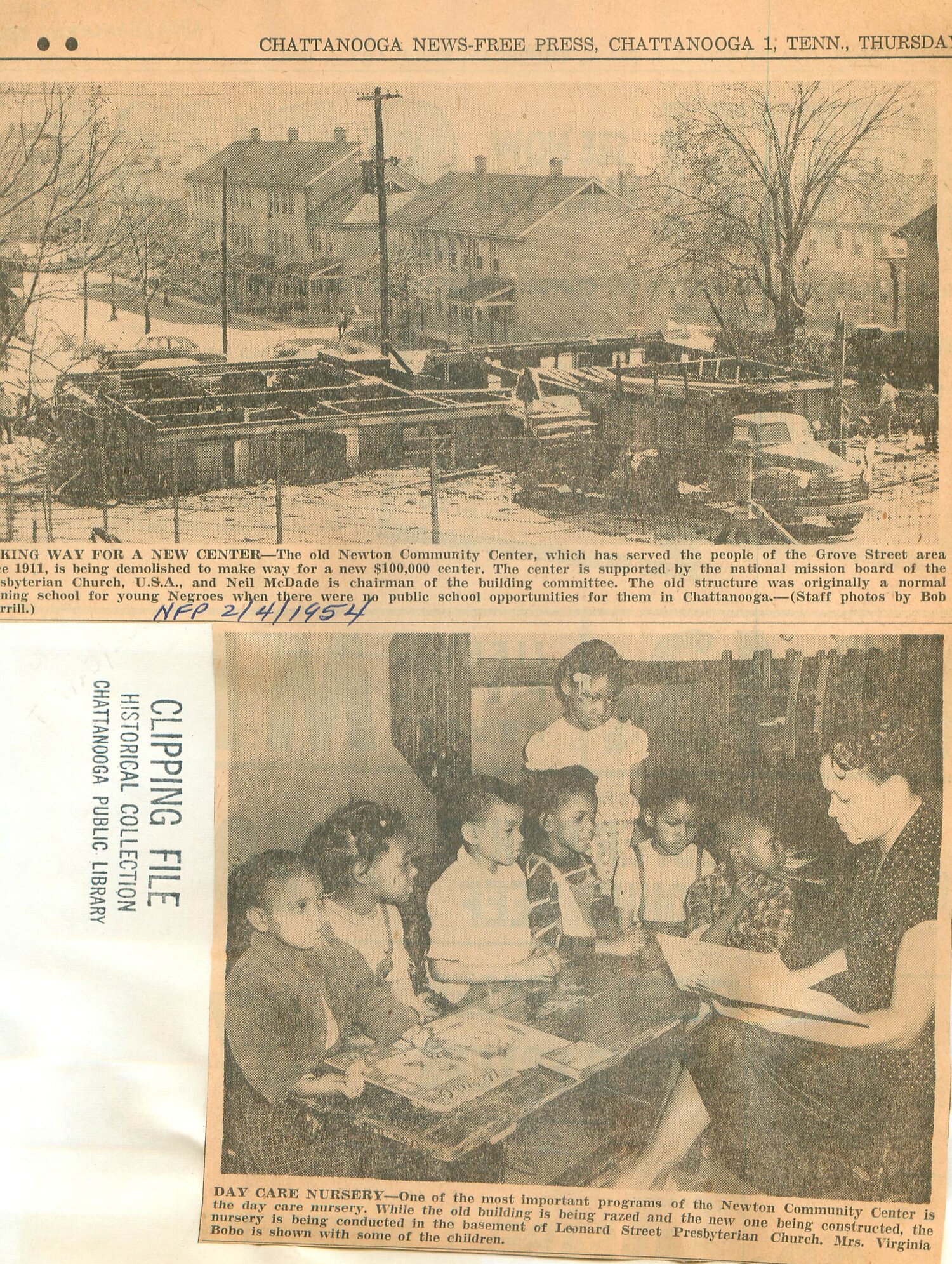
In February of 1954, the Newton Community Center is demolished after a fire and rebuilt on Grove Street. The Center has provided childcare for members of the community since 1903 and continues today.
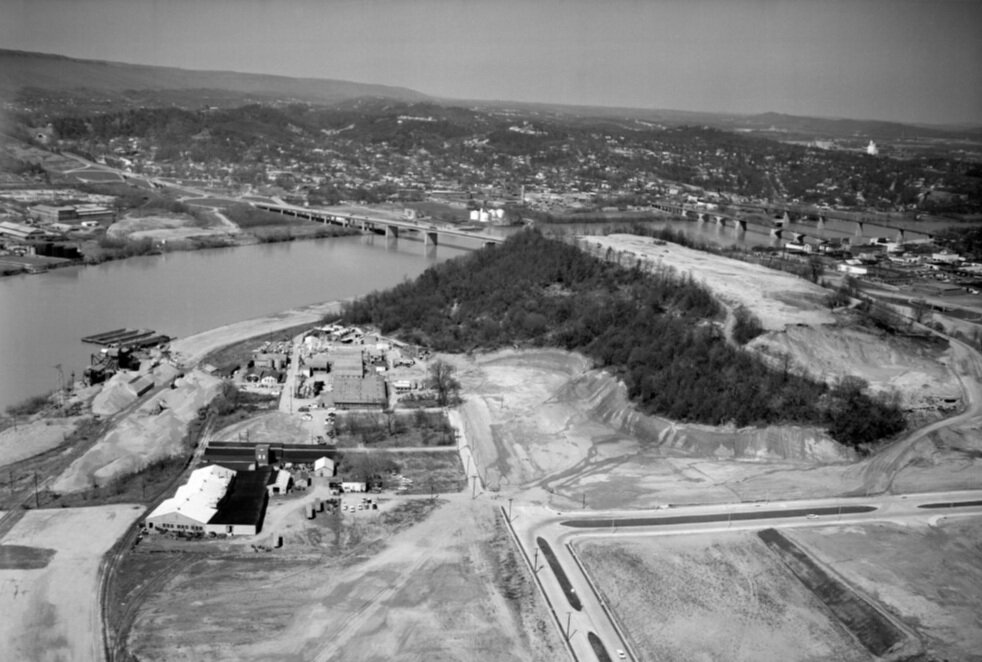 1957Demolition Begins
1957Demolition BeginsCollege Hill Courts remains as Urban Renewal demolishes all surrounding structures. Second District School seen in the middle ground along the new highway. Demolition began in early 1957 and continued for several years through the railroad relocation effort and the addition of Highway 27.
- Highway I-271963
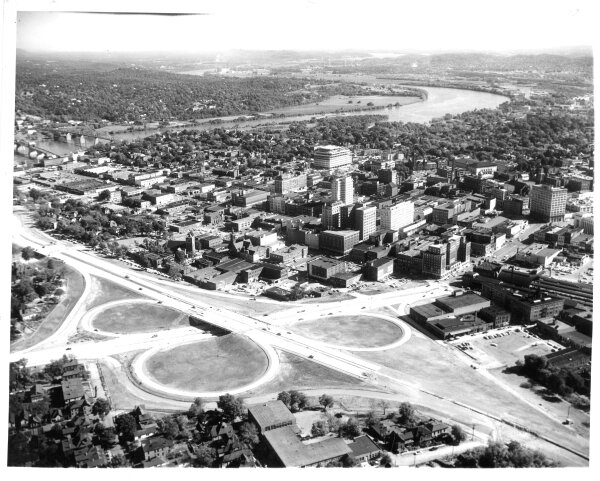
Highway I-27 is completed and opened to the public. Essential to its construction was the dirt transplanted from Cameron Hill.
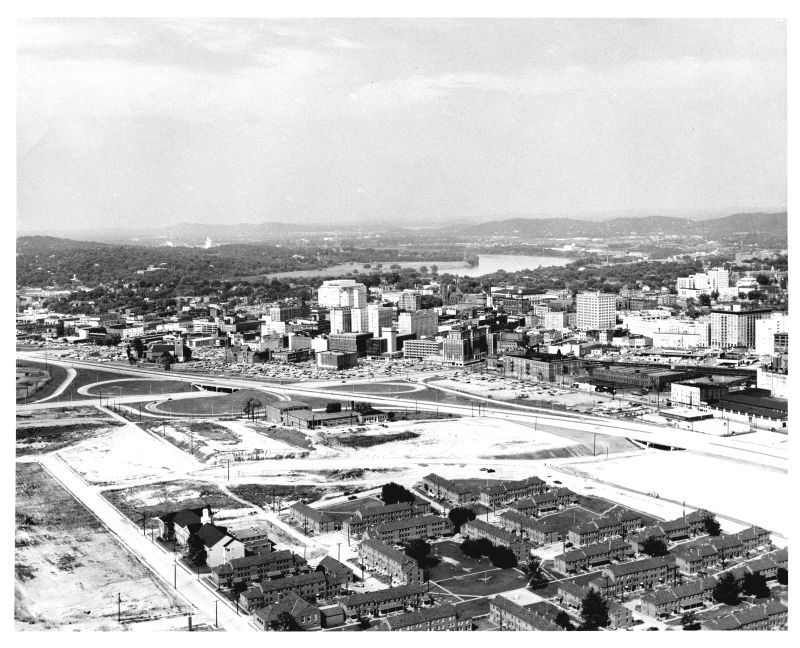
Aerial view of College Hill Courts after the construction of Highway 27. Image provided by Chattanooga Public Library.
- Zayre’s1964

Chattanoogans turned out in great numbers to shop at Zayre's on grand opening day, October 16, 1964. Mayor Ralph Kelley and CHA Executive Director Herbert Banks presided at the ribbon-cutting. Mr. Banks said that the opening of Zayre's was only the beginning for the Golden Gateway. At the time Crest toothpaste was 44 ¢ and tires were $7.97 each.
Golden Gateway
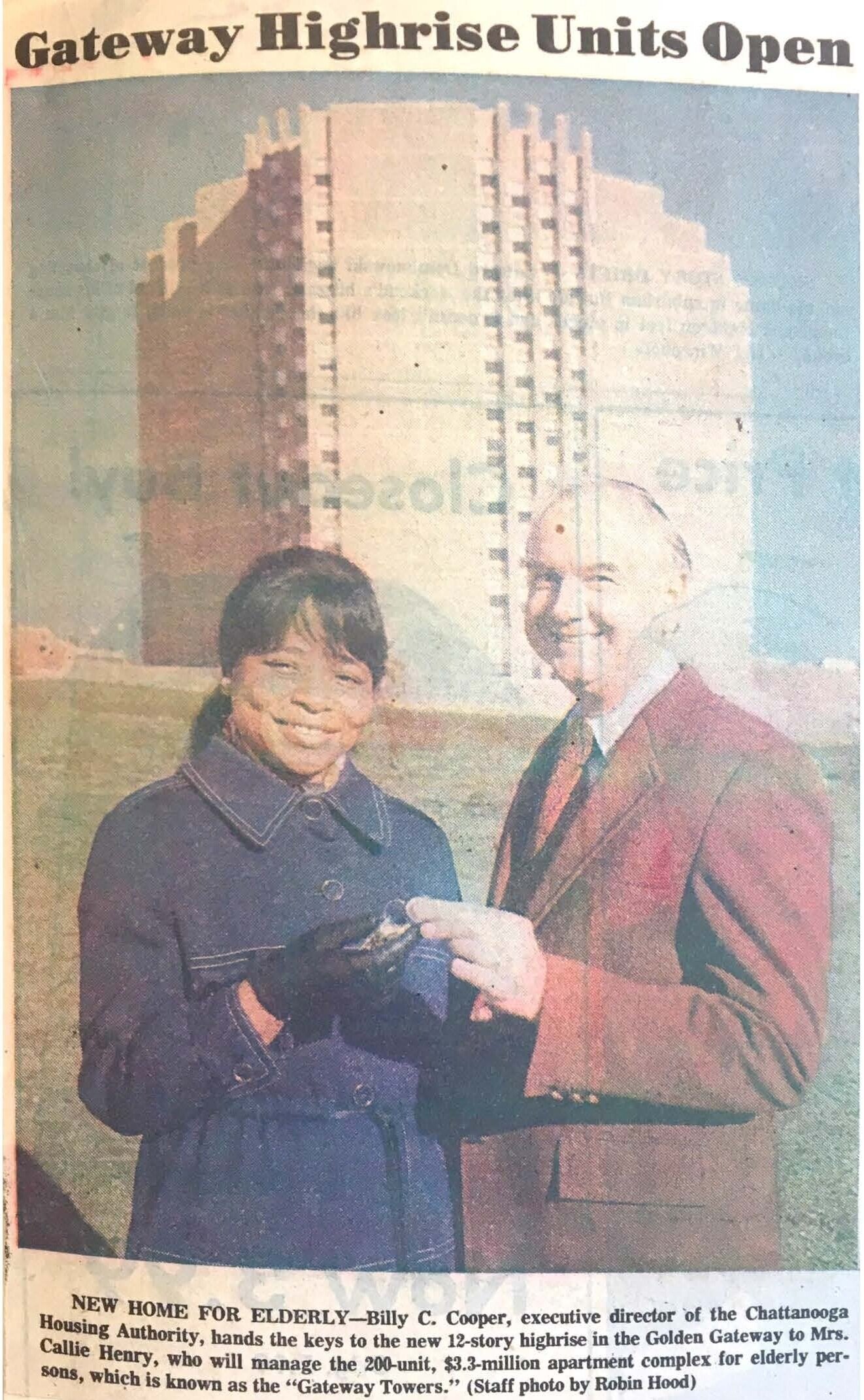 1977Gateway Towers
1977Gateway TowersConstruction is completed on new apartment building for elderly citizens in Golden Gateway.
- James A. Henry Elementary Closes1980
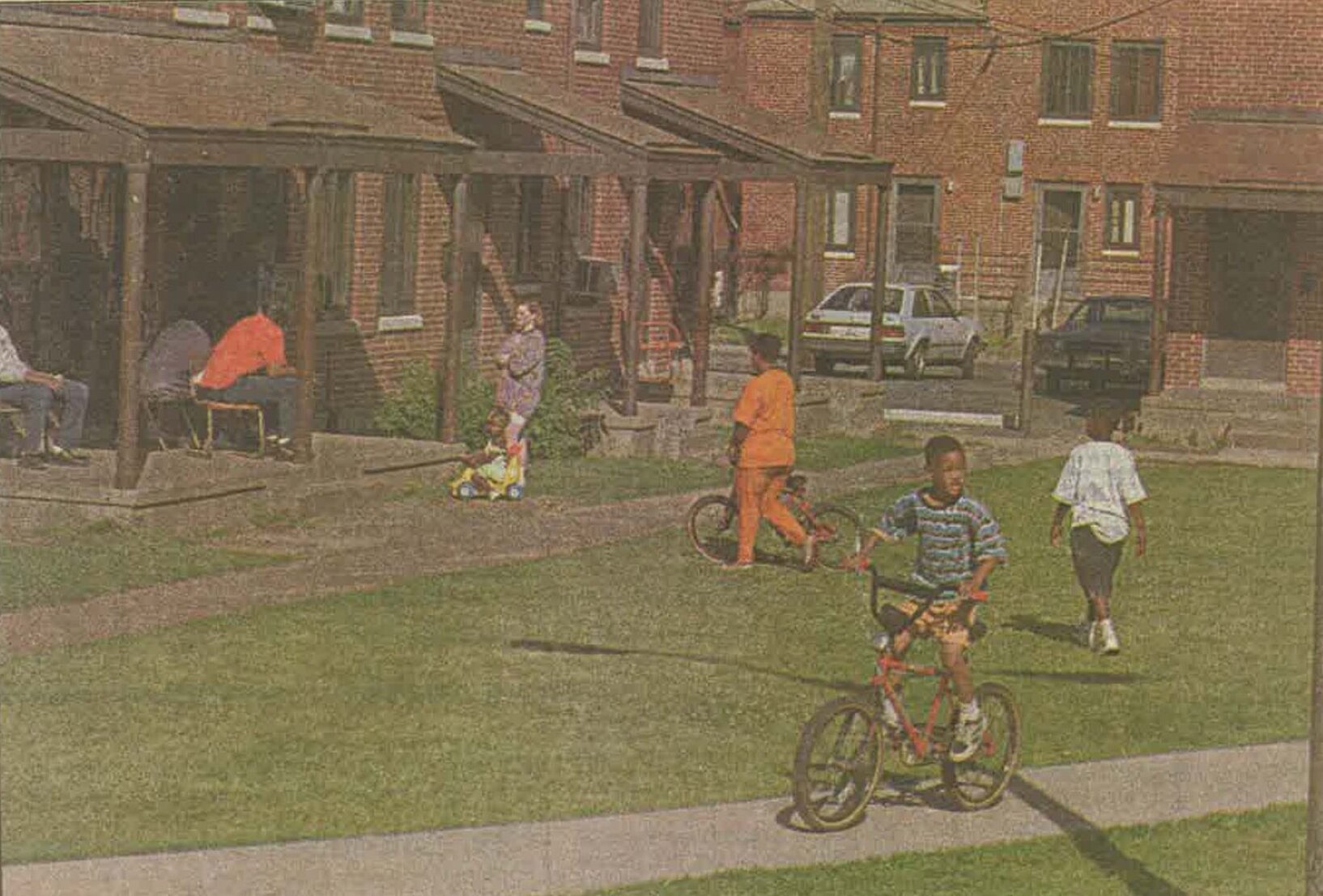
College Hill Courts’ James A. Elementary School closes and many renovations of commercial and community spaces are attempted but ultimately fail all through the 90’s.
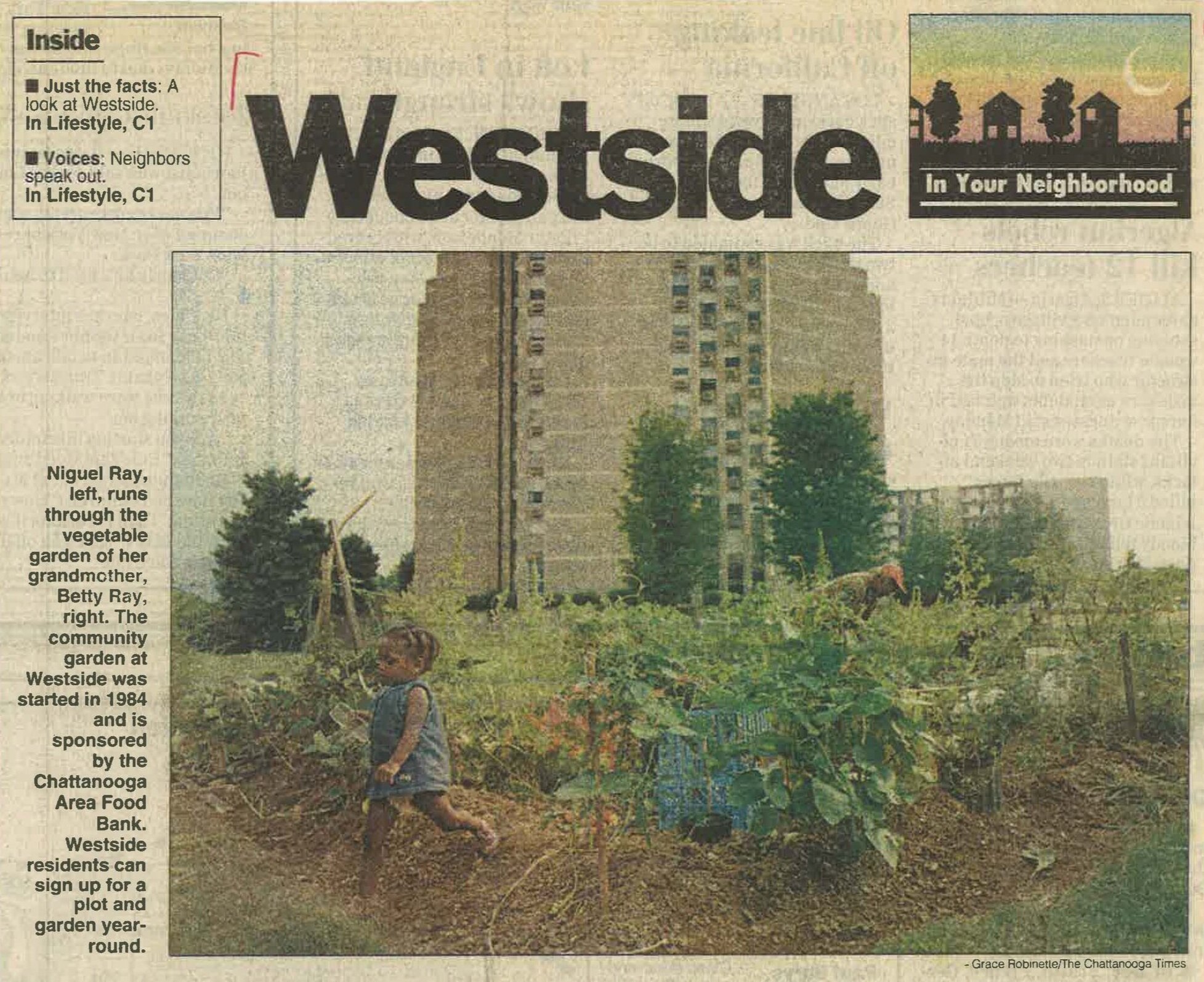 1984Community Garden
1984Community GardenThe community garden at Westside is started by Chattanooga Area Food Bank.
- College Hill Courts Is Remodeled1989
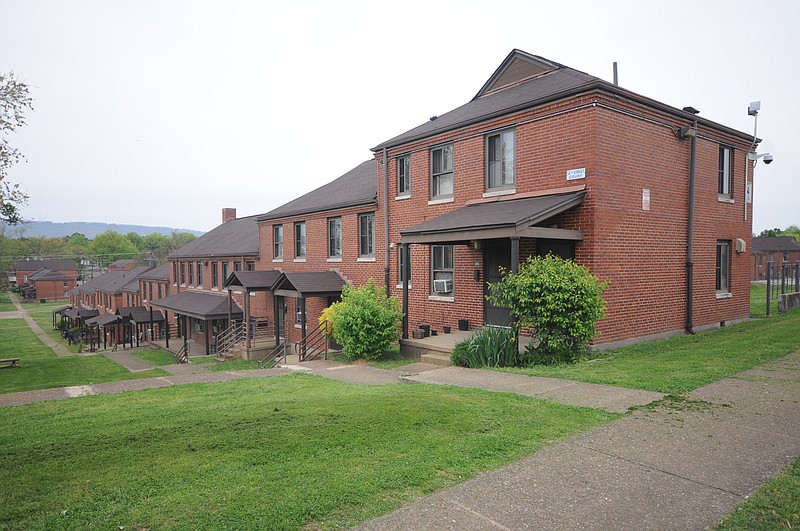
College Hill Courts is remodeled, making some homes ADA compliant.
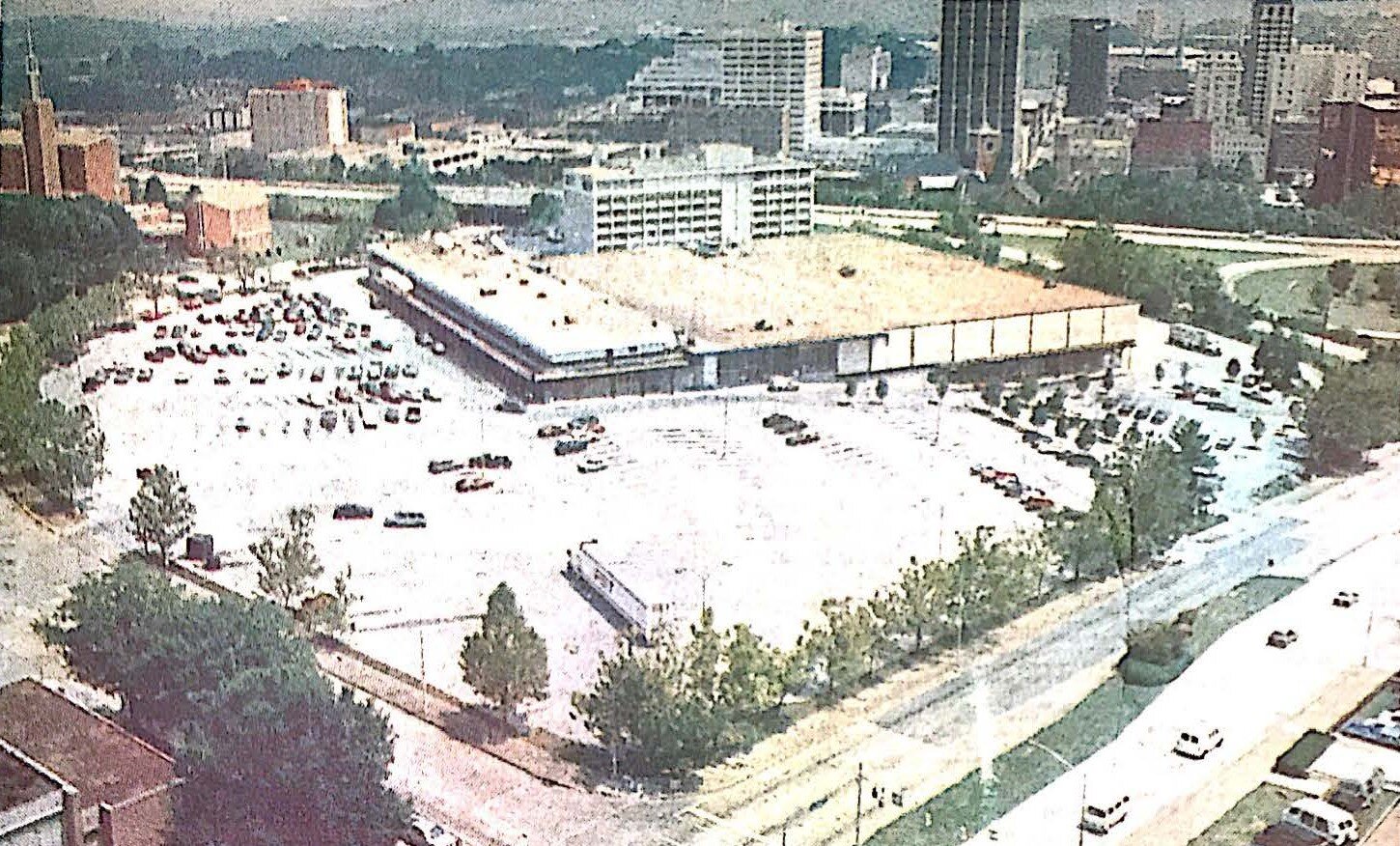 1990Blue Cross Blue Shield Acquires Zayre Building
1990Blue Cross Blue Shield Acquires Zayre Building- D.A.R.E.1991

Gwendolyn Charles and Gwendolyn Scott found D.A.R.E at College Hill and call for the conversion of James A. Henry School into a community service building.
Post Golden Gateway
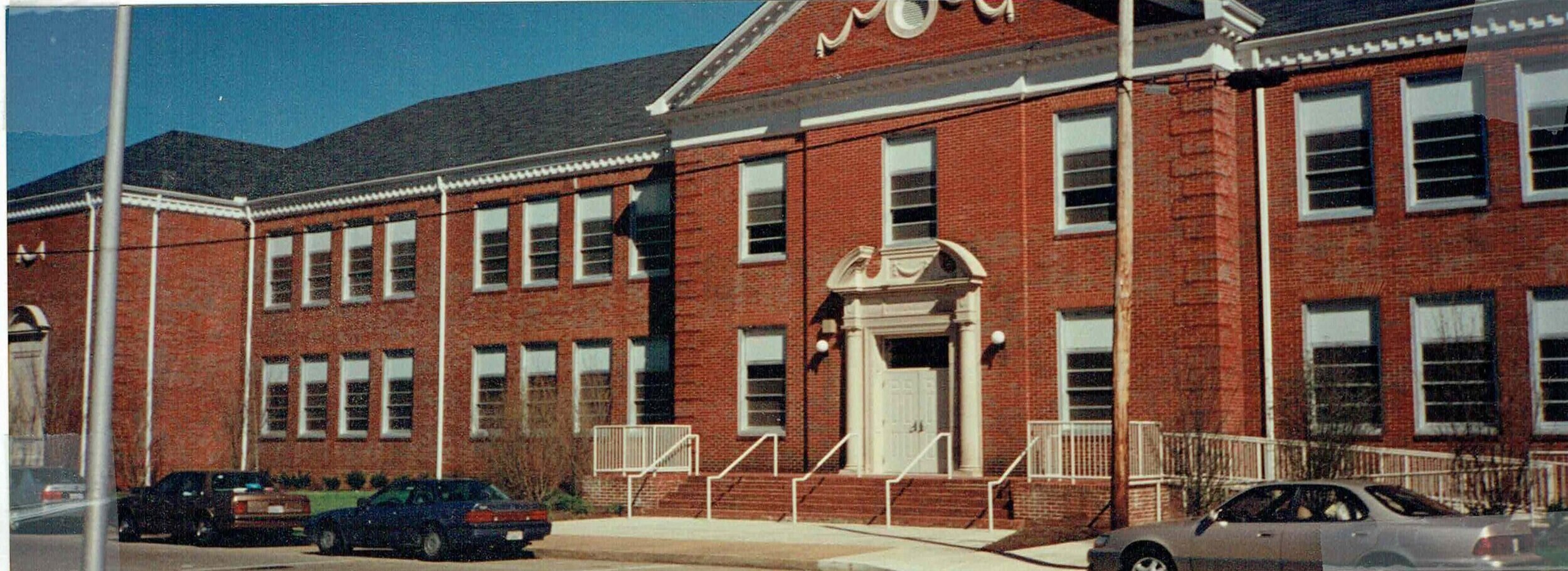 1997James A. Henry Building Renovated for Community Use
1997James A. Henry Building Renovated for Community UseThe building features classrooms, community rooms, and other spaces for public engagement.
- Blue Cross Blue Shield Complex is Completed2007
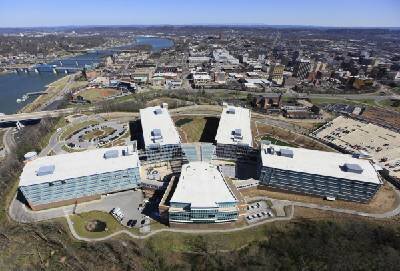
After Blue Cross Blue Shield purchases Cameron Hill in 2000, 7 years later the complex is completed hiring 4,900 employees.
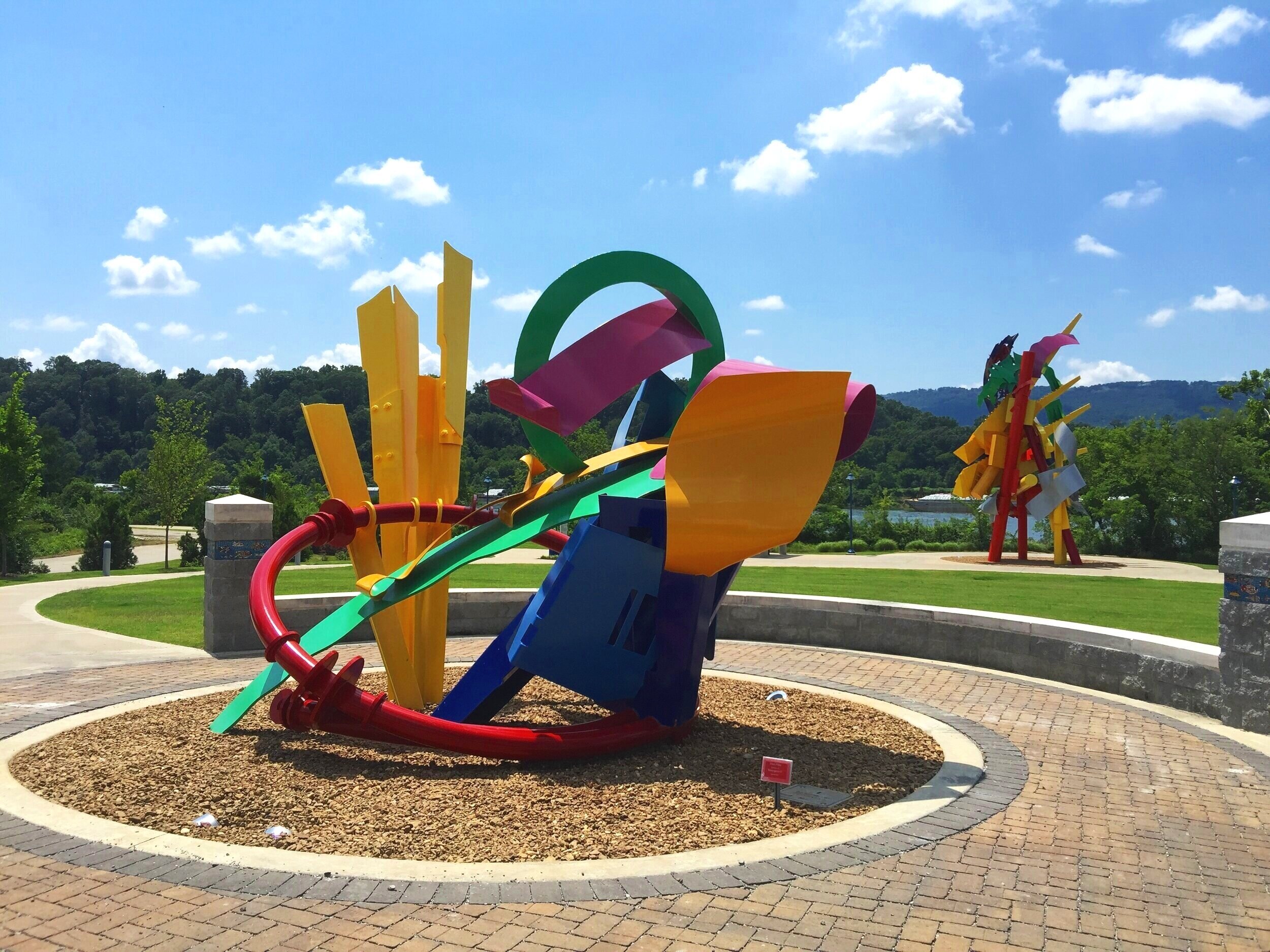 2016Gaining Access
2016Gaining AccessThe River walk extension from the newly developed Blue Goose Hollow Trail head opens, connecting south to St. Elmo.






